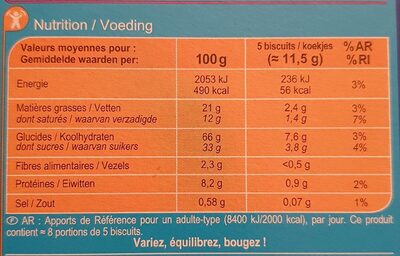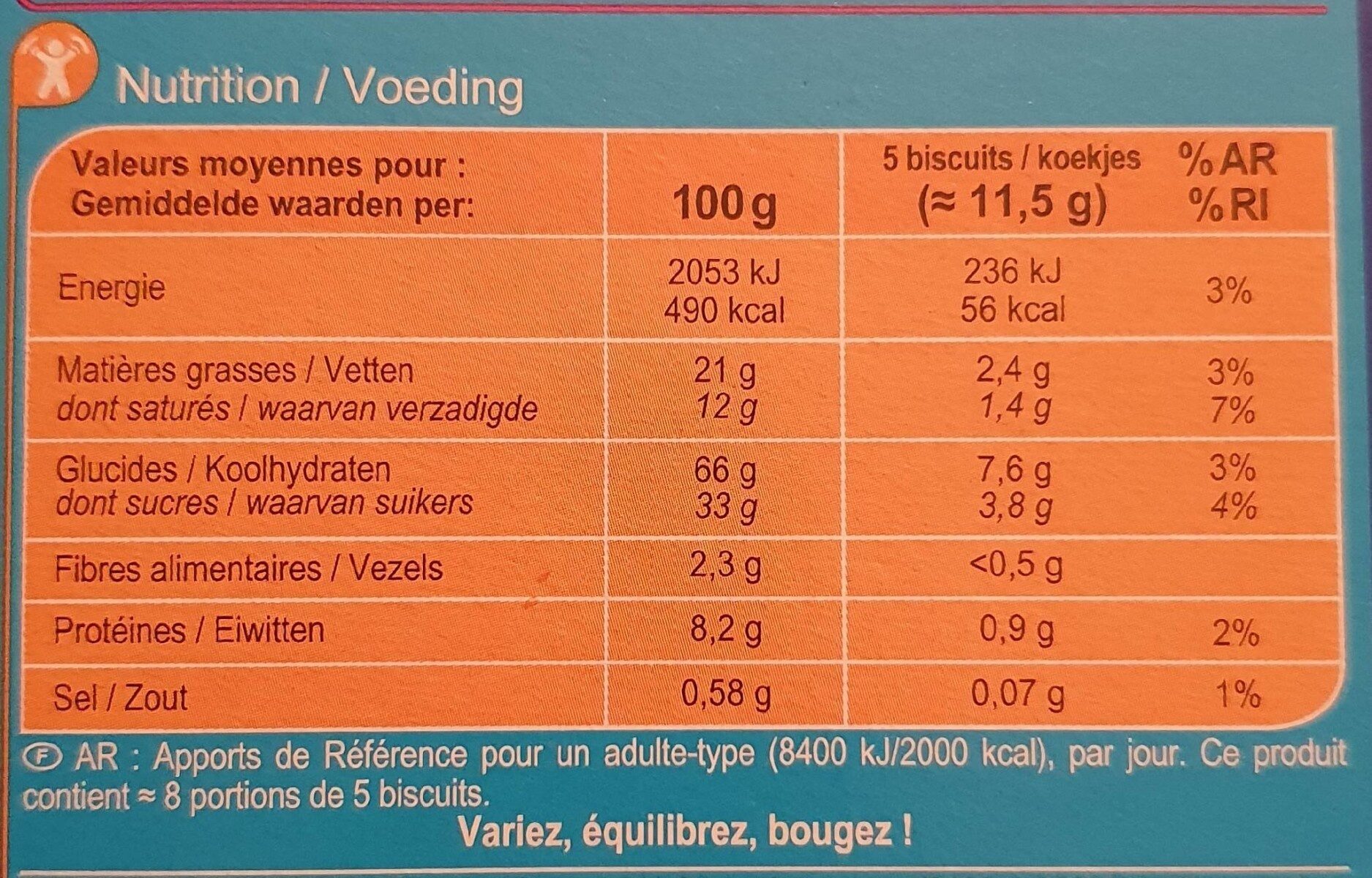Stick chocolat au lait - Carrefour - 90 g
This product page is not complete. You can help to complete it by editing it and adding more data from the photos we have, or by taking more photos using the app for Android or iPhone/iPad. Thank you!
×
Some of the data for this product has been provided directly by the manufacturer Carrefour.
Barra-kodea: 3560070941575 (EAN / EAN-13)
Izen arrunta: Biscuits vrillés nappés de chocolat au lait.
Kopurua: 90 g
Ontziratzea: en:Plastic, en:Box, en:Cardboard
Markak: Carrefour
Kategoriak: en:Snacks, en:Sweet snacks, en:Biscuits and cakes, Gaileta, en:Chocolate biscuits, en:Milk chocolate biscuits, en:Stick biscuits covered with chocolate
Etiketak, ziurtagiriak, sariak:
en:Sustainable, en:Sustainable Palm Oil, en:Green Dot, en:Made in France, Nutriscore, Nutriscore E
Traceability code: EMB 82121 - Montauban (Tarn-et-Garonne, France)
Dendak: Carrefour, carrefour.fr
Matching with your preferences
Other information
Conservation conditions: À conserver à l'abri de la chaleur et de l'humidité. Pour une dégustation optimale, à consommer de préférence avant fin / N° de lot : voir sur le rabat de l'étui.
Customer service: Interdis - TSA 91431 - 91343 MASSY Cedex - France.
Report a problem
Datuen iturria
Product added on by openfoodfacts-contributors
Last edit of product page on by quechoisir.
Produktuaren orria -gatik editatua beniben, driveoff, kiliweb, moon-rabbit, org-carrefour, packbot, pierrekilly, roboto-app, segundo, smoothie-app, spotter, yogoff, yuka.U2FZWVRyWmZ0c0Vha3ZFc296cnZ3LzVIN1lXTkFXZTRLTlFjSVE9PQ, yuka.Ui9zTkM1cFFnZnBWdDhZQnhVM3g1dHRsNUx1dVRXMjlEdVEvSUE9PQ, yuka.UmY0bkhhMDhndllodS9kbXB5UGVvUGR5MW9HRFJUcTZjOGRQSVE9PQ, yuka.WnFvd0xMUWZvL1FLdzlodXJ3L2x4c3NrbWFTblFqUHBFTVFhSVE9PQ, yuka.ZHZrYVM0QU5qK2tPd01BejFETHAydDVLK3JLaVVIS3ZEL285SUE9PQ, yuka.sY2b0xO6T85zoF3NwEKvlm5jdPreiS3PaBj5u1WWz_2iA5XOQvN9-rX-Kqs.












